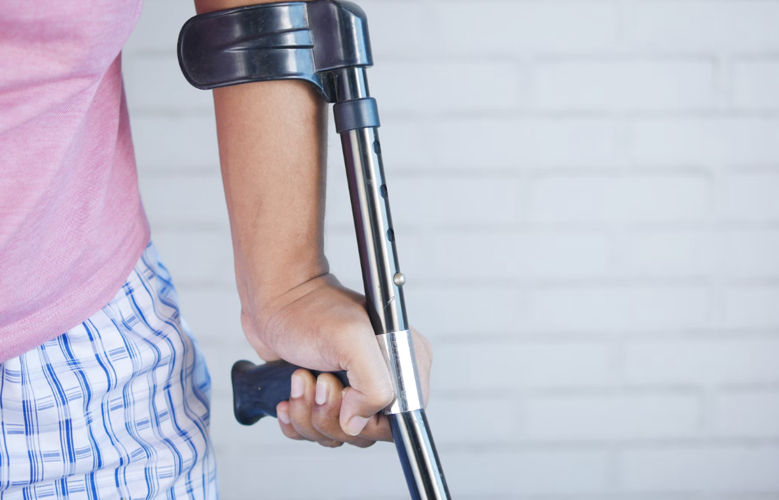When dealing with an injury, the healing process is different for everyone. Whether you are recovering from a sports-related trauma or were recently involved in an accident, getting back to health is possible if you develop a plan and take it one step at a time. In this blog post, we’ll share some best practices for recovery after an injury so that you can get back to enjoying life quickly and safely. With the right strategies and approach, you’ll be able to improve your quality of life and prevent further injuries down the line--so let's get started!

Make sure to take adequate rest and get enough sleep
Rest is crucial for your body to heal after an injury. It gives your body the time it needs to repair damaged tissues and reduces the risk of further injury. This does not mean lying down all day, but rather finding a balance between rest and gentle movement. Depending on the type and severity of your injury, you may need to limit certain activities or use assistive devices to aid in your recovery. Additionally, getting enough sleep is crucial for your body to heal properly and allows you to feel more energized during the day.
Monitor your pain levels and take necessary medication
Taking care of our health is always crucial, especially when it comes to managing pain after an injury. Pain serves as an indicator of how well your body is healing, allowing you to gauge progress and seek appropriate treatment. It's important to diligently monitor your pain levels and effectively communicate any changes to your doctor. They can then provide personalized recommendations, which may include prescribing medication or suggesting alternative pain management techniques, such as physical therapy or acupuncture, tailored to your specific needs and circumstances. By actively managing and addressing pain, you can optimize your recovery and overall well-being.
Follow a well-balanced diet
A nutritious diet plays a vital role in the healing process following an injury. It is important to incorporate a variety of foods that are rich in essential vitamins and minerals to support optimal recovery. A wide range of fruits, such as berries and citrus fruits, can provide antioxidants and vitamin C, which are known to boost the immune system and aid in tissue repair. Vegetables like leafy greens and cruciferous vegetables are packed with nutrients like vitamins A, K, and folate, which are beneficial for healing. Whole grains, such as quinoa and brown rice, offer fiber and important nutrients like magnesium and zinc. Lean proteins, such as chicken, fish, and tofu, provide essential amino acids for tissue repair and muscle recovery. Don't forget to include healthy fats from sources like avocados, nuts, and olive oil, as they support inflammation reduction and nutrient absorption.
In addition to a well-balanced diet, proper hydration is crucial for the healing process. Drinking an adequate amount of water throughout the day helps maintain the body's fluid balance, supports proper bodily functions, and aids in the transportation of nutrients to the injured tissues.
Try physiotherapy for targeted healing and rehabilitation
Physiotherapy is a popular form of treatment for many types of injuries. A trained physiotherapist can assess your injury and create a personalized treatment plan to target specific areas and promote healing. They may use techniques such as massage, stretching, and exercises to improve mobility, strength, and flexibility, as the team for physiotherapy in Burlington at Pillars of Wellness explains. Physiotherapy can also help prevent future injuries by identifying and addressing any underlying issues that may have contributed to the initial injury.
Don't rush back into your normal routine
After sustaining an injury, it is often tempting to rush back into your regular activities without giving your body enough time to heal. However, this impatience can potentially cause more harm than good. It is crucial to pay close attention to your body's signals and gradually reintroduce physical activity. This may involve making modifications to certain activities, such as reducing their intensity or duration, and incorporating regular rest periods. By taking these necessary precautions and not pushing yourself too hard too soon, you can help prevent re-injury and ensure a smoother healing process. Remember, patience and listening to your body are key when recovering from an injury.
Seek emotional support
While recovering from an injury, it's completely normal to go through a wide range of emotions. Alongside frustration and sadness, you may even experience moments of depression. That's why it's crucial to reach out for emotional support from your friends, family, or a therapist. Having someone to lean on can truly help you navigate and cope with these feelings.
Not only can they provide a listening ear, but they can also offer words of encouragement and motivation as you bravely work towards your recovery. Remember, you are not alone in this journey.
In addition to seeking support, engaging in activities that bring you joy and a sense of accomplishment can be incredibly beneficial for your mental well-being during this challenging time. Whether it's pursuing a hobby, practicing mindfulness, or setting small goals, these activities can help uplift your spirits and provide a much-needed boost of positivity.
Stay positive and patient
Healing takes time, and it's important to stay positive and patient throughout the process. Embrace the journey as you gradually progress towards recovery. Set realistic expectations that align with your unique circumstances, and celebrate every small victory along the way. Remember that setbacks are a natural part of the healing process, but they should never discourage you from your ultimate goal of full recovery. By maintaining an optimistic mindset and practicing patience, you'll pave the way for a swift and complete return to health after an injury. Your commitment to self-care and perseverance will undoubtedly yield fruitful results in no time at all.

Pain management is not something to be taken lightly. It requires discipline and strong commitment if you want to get the best possible outcomes. Taking the necessary steps such as getting adequate rest and sleep, monitoring your pain levels, using cold and heat therapies to reduce inflammation, engaging in gentle stretching exercises gradually to improve mobility, and implementing a dietary plan centered on nutritious foods will no doubt help you in keeping your pain under check. Remember that your well-being should always come first - take time out for yourself and do activities that make you genuinely happy. If all else fails or becomes too overwhelming, don't hesitate to seek professional help. For an account of home remedies for chronic joint pain, sticking with this guide will surely benefit you in managing your health goals without compromising quality of life.





(0) comments
We welcome your comments
Log In
Post a comment as Guest
Keep it Clean. Please avoid obscene, vulgar, lewd, racist or sexually-oriented language.
PLEASE TURN OFF YOUR CAPS LOCK.
Don't Threaten. Threats of harming another person will not be tolerated.
Be Truthful. Don't knowingly lie about anyone or anything.
Be Nice. No racism, sexism or any sort of -ism that is degrading to another person.
Be Proactive. Use the 'Report' link on each comment to let us know of abusive posts.
Share with Us. We'd love to hear eyewitness accounts, the history behind an article.